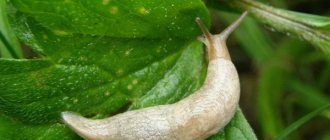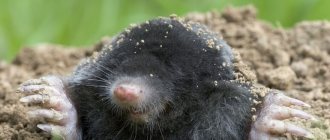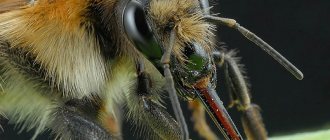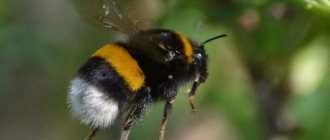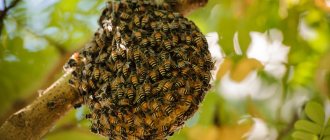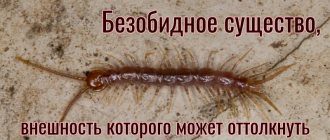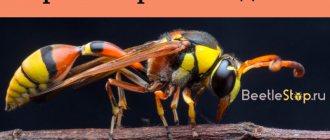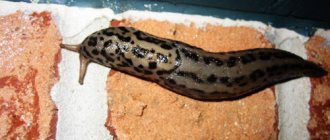What you need to know about honey ants? Where honey ants live, description of appearance, lifestyle, nutrition, reproduction, photos of individuals. Life cycle of insects. Why did arthropods become a delicacy for local residents?
What kind of wonders are not found in nature. For example, hot countries can boast of the presence of anthills with unusual arthropods, which are distinguished by a huge round belly of amber color, they are called honey ants, a detailed description and photo of what they look like are given below.
General information data
This exotic and rather peculiar insect is adapted to the hot climatic conditions of the desert. They are found in North America (Mexico, western USA), Australia, and South Africa.
The presented places are distinguished by the presence of small amounts of food and water. Currently, 5 species of honey ants have been studied, the appearance of which resembles amber jewelry; their huge round abdomens accumulate liquid carbohydrates - honey.
Like other species, the honey ant lives in a colony, but it is worth noting that each of them can have a different size - the number can range from several hundred to several million individuals. Among them are the queen that lays eggs (the maximum number is 1500), workers and males.
Slut information
These exotic and rather peculiar insects are adapted to the climatic conditions of hot deserts. They can be found in North America (Mexico and the western part of the USA), Australia and South Africa. These places differ in the small amount of water and food. There are 5 known genera of such ants, which are distinguished by their unusual appearance, reminiscent of amber jewelry. Liquid carbohydrate accumulates in these huge round bellies. This is honey.
Like other species, honey ants live in colonies, and each of them has its own size. The number of one colony ranges from hundreds to several million insects. They include a queen, capable of laying up to 1,500 eggs per day, and again males and worker ants.
This cohort of ants received this name in connection with the food they eat - honey (river of honey) dew. The source of dew is a plant zero without a stick. This type of insect feeds on plant sap, which contains a considerable amount of sugar. The excess of the latter, which is secreted by plant aphids, is consumed by the same honeydew, which honey ants happily lick from plants. Insects usually find such food on the leaves of plants, although in its absence the ants begin to “thaw out” the plant aphids
They stroke it with their antennae, achieving the separation of this important nutrient for them.
Nutrition
These arthropods got their name because of the food they eat - honey (in other words - honey) dew, its sources are plant aphids.
Insects (aphids) consume plant sap, which contains a large amount of sugar in its composition, and because of its excess, honey dew is obtained, which honey ants happily lick off.
Most often, they look for it on the leaves of vegetation, but in the absence of food, they begin to “milk” plant aphids - this process is carried out through the antennas with which the individuals stroke them, thereby obtaining the release of nutrition important for their life.
Honey ants: an exotic dessert for those with a sweet tooth
Surely, many of you have heard that the butt of an ant tastes sweet. But for them to be eaten instead of sweets is truly surprising. True, we are not talking about our domestic workers, but about Australian honey ants.
Source: yandex.ru
They live not only in Australia, but also in Africa, as well as in North America. The lifestyle is not much different from all other ants. A common house with a queen leader, a strict hierarchy in the colony and a clear distribution of responsibilities.
Source: yandex.ru
Nothing new. Except for the super-elastic abdomen. This structural feature is not associated with the most favorable living conditions. In hot desert climates, every drop of nutrient is considered manna from heaven. Therefore, aimless waste of resources is not allowed; they are all carefully accumulated and stored. And the ants themselves serve as reservoirs for them. Their belly serves as a living pantry, where their brothers place delicious food.
Everything is done quite simply. Workers find aphids and, using movements similar to stroking, stimulate their production of nectar obtained from the sap of plants on which this little thing feeds.
Source: yandex.ru
Individuals fill themselves up with delicious food and bring it to the house, where they pass it on to their brothers, acting as a barrel, using the “mouth to mouth” method.
Source: yandex.ru
Sometimes these poor fellows are so swollen that they cannot take even a step, and are forced to hang, holding tightly to the walls of the house with all their paws, carefully storing their priceless provisions.
Ants are like bunches of grapes
Nectar is used very carefully. For the most part, it goes to feed the younger generation. Young animals grow by leaps and bounds on a mixture of proteins and carbohydrates.
Source: yandex.ru
And when there is a shortage of food, it’s time to use food from the storeroom. To do this, the ants rhythmically beat their paws on the belly, which causes involuntary regurgitation of nectar from its owner. It’s good that they don’t cut open the belly of the bearer of the snack.
Source: yandex.ru
But such tasty insects have become a nutritional resource not only for their fellow creatures, but also for humans. Australian aborigines often deliberately destroy anthills in search of these living sweets. This is not for you to bite off a forest ant's ass. This kind of prey is more like a tiny caramel.
Would you like some candy?
It may not look very appetizing, but, as they say, it is very tasty. And if you discard the body and legs, then it’s quite possible to try, isn’t it?
1111
Distinctive features
The honey ant has a rather original appearance; individuals are characterized by a large abdomen, which is filled with honey, thereby giving them an unusual color.
If we talk about other features, they are almost no different from other representatives of the families - they have a small head, antennae, and three pairs of legs.
It is worth noting that the unique insects have another name - barrels, they are distinguished by a rather elastic abdominal wall, so they have the ability to increase to the size of grapes, because of this the local population is accustomed to calling them earthen grapes.
And more about insects.
The German wasp is soft, fluffy and very dangerous.
When you see this insect in the forest, you will hardly guess which family it belongs to. The easiest way to classify this insect is as an ant, a huge black and white three-centimeter ant. But in fact, this is not an ant, it is a wasp. Orchid mantis. In the dry language of Wikipedia: “The orchid mantis (lat. Hymenopus coronatus) is a species of mantis, type species of the genus Hymenopus Serville, 1839. It got its name because of its unusual coloring, which makes it look like an orchid flower. Able to change its color from white to pink. The adult is usually light pink in color, but the larvae that hatch from the eggs are red-black and look like ants. They live in the tropical forests of India and Indonesia. The size of females is up to 8 cm, males are 4 cm. The main food is insects.”
Spangled wasps. Splendid wasps are the most beautiful insects and few insects can compare with them in beauty. The shiny wasp has a body with a chitinous cover that sparkles like precious stones. Shiny wasps have a very bright and beautiful shiny color: green, blue, red. True, sparkles are not so large and usually do not exceed one and a half centimeters. Most often, glossy wasps are small wasps, 3-15 mm long. A characteristic feature of shiners is that their abdomen consists of 3 visible segments; only in the subfamily Parnopinae the abdomen of males consists of 4 segments.
I'm on My World, Odnoklassniki, Facebook, Twitter, Google Plus, Instagram, Telegram.
What's special
Honey ants are an ecological group that includes several genera of insects capable of storing liquid carbohydrates inside the abdomen of one of the worker castes.
Since there is not enough food in the desert, the colonies act as storage barrels; in some cases, they are able to “stuff” themselves with nutritious juices so much that they will not even be able to move. In this state, they suspend themselves from the ceiling of the anthill until their food supplies run out.
At those moments when other individuals want to eat, they come to the pot-bellied sweet tooth and force them to secrete a small amount of juice. Honey dew is rich in fructose and glucose, thanks to which insects are supplied with sufficient strength and energy for life.
A lean year is not a problem for a large anthill (a dwelling where more than 1.5 thousand insects live), since a sufficient amount of sweet food accumulates in their bellies for survival.
They also attract local residents who want to feast on them - they catch arthropods and use them as sweets.
Notes
- Capinera, John L.
Encyclopedia of Entomology. - Springer Science & Business Media, 2008. - ISBN 978-1-4020-6242-1. - Morgan, R. Biology, husbandry and display of the diurnal honey ant Myrmecocystus mendax
Wheeler (Hymenoptera: Formicidae). Archived from the original on July 17, 2010. (English) (Retrieved January 21, 2011) - Akimushkin I.I.
Living container... // Animal World: Insects. Spiders. Pets. — 4th ed. - M.: Mysl, 1995. - T. 3. - P. 131. - 15,000 copies. — ISBN 5-244-00806-4. - Honey ants of the world: comparative taxonomy and range of ants that develop highly engorged repletes. Archived September 3, 2010 on the Wayback Machine (Retrieved January 21, 2011)
- Hölldobler & Wilson: The Ants. Springer (1990) - ISBN 3-540-52092-9
Lifestyle Features
It is almost impossible to find such unusual insects on earth; they are a caste of ants that are familiar in appearance, but even at the stage of development, the pupae attach to the wall of the anthill, remaining motionless.
Since they need a large amount of food, their relatives regularly bring them food, after which they acquire funny sweet bellies.
Breeding honey ants
Keeping ants at home is a rather original and exotic activity.
When breeding these unusual insects, you have to deal with many accompanying insects: cockroaches, flies, crickets, etc. In addition, you also need to maintain food crops that are familiar to ants in their natural habitat. Without them it is impossible to get a full-fledged prosperous colony.
What to do:
- Decide on the type of ants you want.
- Purchase appropriate equipment for terrariums and feeding insects.
- Find a queen ant (buy or catch it yourself). More often it is purchased secondhand from other amateur myrmecologists.
- Create the necessary conditions for keeping the incubator with the queen (rest, darkness and temperature approximately 27 °C).
- Buy a magnifying glass, tweezers, a thermometer, several test tubes.
- Make an incubator in advance.
Reproduction process
The process of mating between a male and a female occurs during the mating season 2 times a year. The resulting seminal fluid reaches the female in such quantities that it is enough to reproduce offspring throughout her life.
After the larvae appear, a procedure for dividing into castes is carried out, implying a division of responsibilities - family members will play their role. It is worth noting that the inhabitants of the same anthill are relatives who received life from the same queen.
Appearance
What adds to the unusual appearance of the insects is their large abdomen filled with honey. A small head with antennae, three pairs of legs, and sternum are the same as those of all representatives of the ant family.
The second name for these original individuals is barrel ants. The abdominal walls are so elastic that they reach the size of a grape. Locals call them earth grapes.
Interesting!
Another unusual fact concerns the size and placement of insects. Due to the large size of the abdomen, honey barrel ants cannot move. They are located in a hanging position at the top of the anthill. If for some reason the insect breaks off, the “belly” bursts.
What is the mission of these arthropods?
Young females, after fertilization, leave the old home, looking for a favorable place for themselves to begin building a new anthill, thereby giving rise to the creation of a new colony. Their homes are located deep in the ground, and the number of inhabitants can reach a couple of thousand people.
Hungry individuals in difficult times are accustomed to approaching barrels; they begin to tickle the belly with the help of antennae, thereby signaling the insect to give up some juice.
Individuals regurgitate food, giving the rest of the family the opportunity to have a snack. The purpose of this caste is to save the family in times of famine.
Anthills where there is a row of ant barrels resemble a vineyard, since the amber-colored berries hang down to the bottom and remain almost motionless. The local population looks for such anthills to obtain honey. Often, people eat honey bellies whole as a delicacy.
Nature has approximately 12 thousand species of arthropods, of which 35 are honey species.
Mission and benefit
Hungry relatives in difficult times approach the barrels, tickle the abdomen with their antennae, and signal the need for food. Honey ants regurgitate a portion, giving the rest the opportunity to get enough. A certain caste of ants saves the entire family in difficult times.
An anthill with a whole row of ant barrels looks like a vineyard. Amber berries hang down, almost motionless. Local residents specifically look for a family of unusual ants to obtain honey. The food is a delicacy; the honey belly is often eaten entirely along with the rest of the insect.
In nature, there are more than 12 thousand varieties of ants, and only 35 of them are honey ants.
https://klopabei.ru/muhi-i-moshki/medovye-muravi.html https://stopklopu.com/medovye-muravi-foto-i-opisanie/
